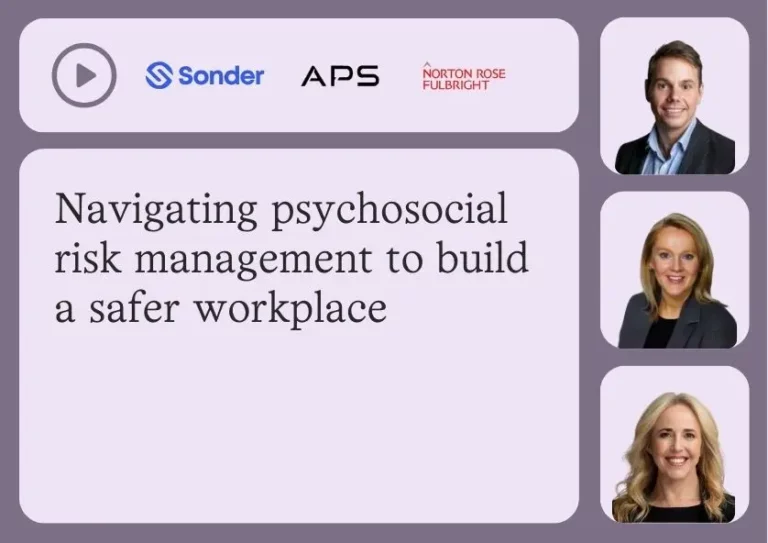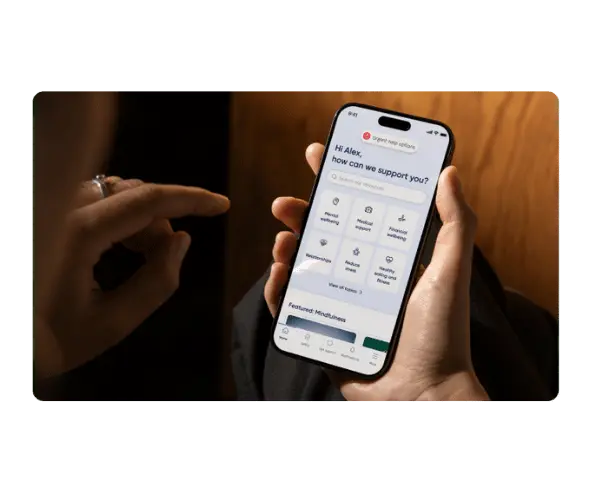

The four steps to managing psychosocial risk
Sonder’s free-to-download tools and templates will help you identify, assess, and effectively control psychosocial risks. Use them to support your four-step process, and take proactive steps to support your employees’ psychological wellbeing.
“The legal risk in this area is high. It’s essential that organisations are actively considering the effectiveness of controls and are taking action if initiatives aren’t working. The main thing I would encourage people to do is take action, even imperfect action. The regulator will be much more impressed with that than an organisation that has done nothing on a particular issue.”

Health and Safety Specialist and Partner at Norton Rose Fulbright.
Ready to get started?





